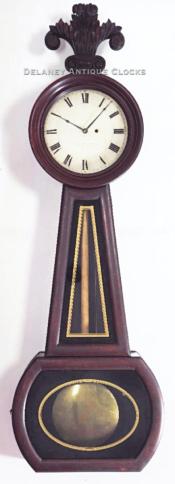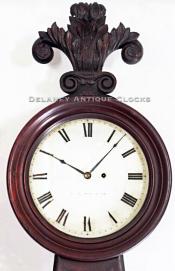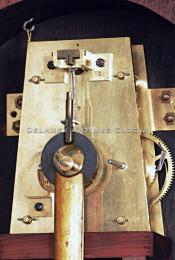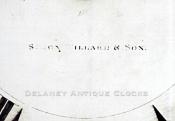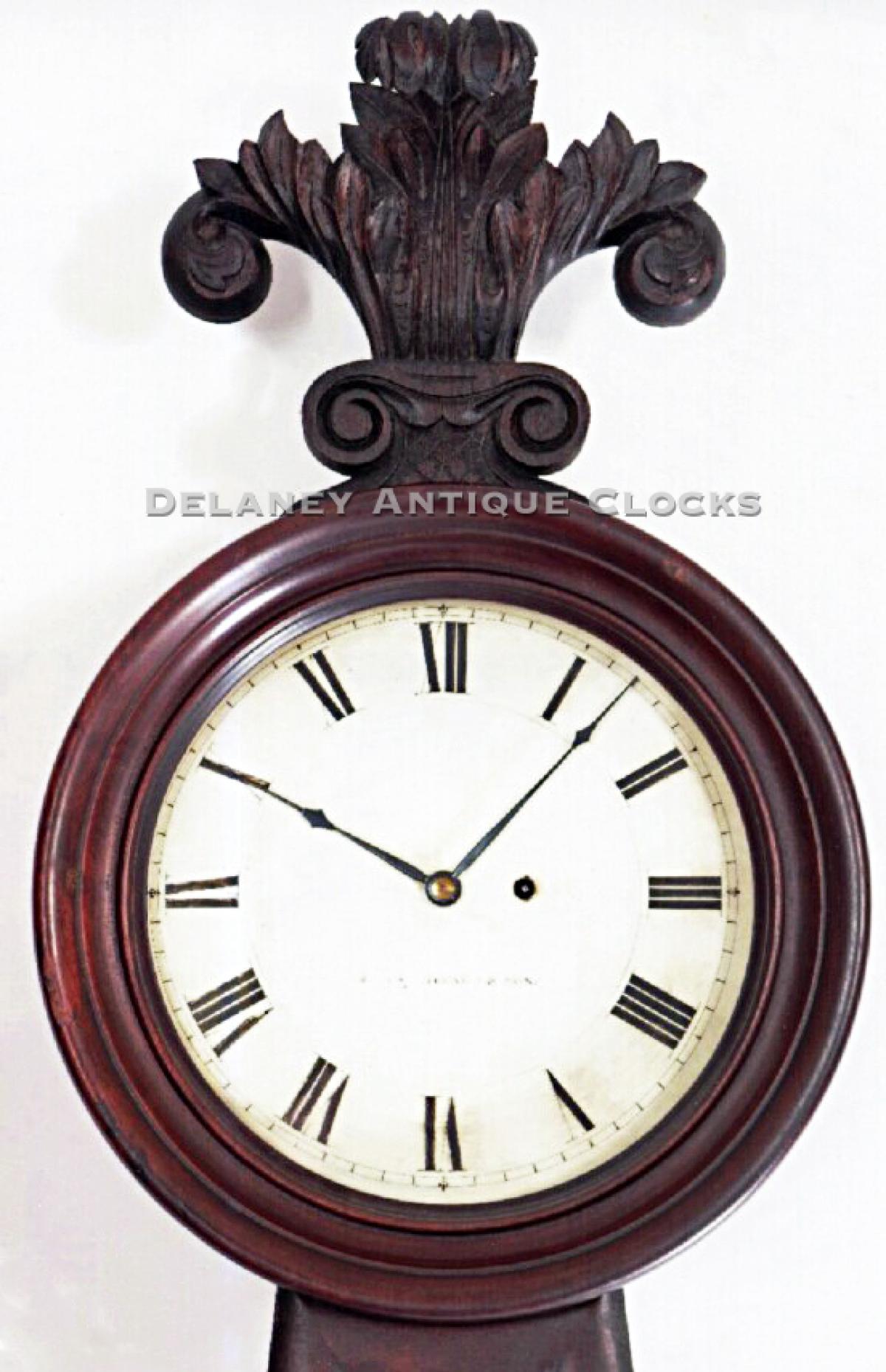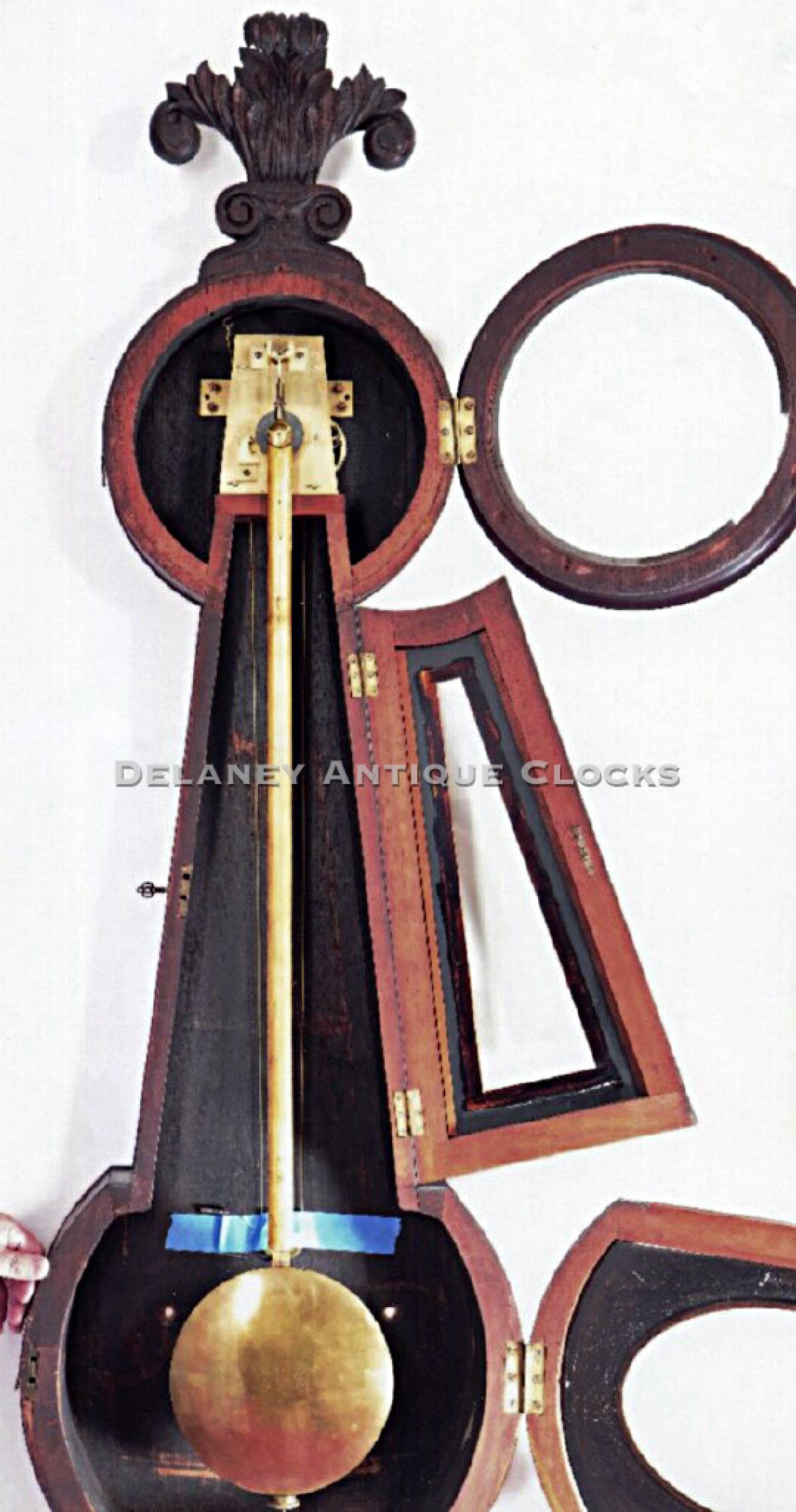Simon Willard & Son Regulator clock or timepiece. Boston, Massachusetts. REGULATOR. UU-88.
This impressive wall timepiece or regulator, in excellent condition, was made by the partnership of Simon Willard & Son in Boston, Massachusetts, circa 1835. This example is signed on the dial by the Makers.
The renowned clockmaker Simon Willard was the first to produce a timepiece built to this scale. This regulator format became a very popular form in later years and was made in significant numbers by the clock companies of Howard & Davis and the E. Howard Clock Company in Boston.
This case is constructed in mahogany, mahogany veneers, and New England white pine. It retains what looks to be its original finish. The case form was originally called a timepiece or regulator.
The dial bezel is decoratively turned out of mahogany and is fitted with glass. It hinged to the case on the right and locks closed with a key. It opens to allow one access to the finely crafted steel hands and the painted iron dial. This dial is signed "Simon Willard & Son" across the center. The time track is displayed with Roman-style hour numerals and a closed minute ring.
The time-only weight-driven movement, a testament to the masterful craftsmanship of its time, is brass construction. Fully wound, it is designed to run for eight days. The heavy brass trapezoidal-shaped plates are held together with four turned pillars or posts. The back plate is secured to the backboard with brass tabs. This movement is also supported by a seat board that rests on the rail extensions that make up the sides of the case. The gearing is finely made. The teeth in the gear train are deeply cut. The escapement is a deadbeat. The pendulum hangs from a T-bridge suspension from a bridge mounted to the front of the movement. The pendulum is constructed with a shaped wooden rod that retains much of its original gilding. This rod supports a heavy brass-faced bob that measures 8.5 inches in diameter. A large brass-rating nut is used to adjust the length. This pendulum beats seconds or sixty beats a minute. Clocks designed like this one are generally excellent timekeepers and vary only seconds a month.
The half-round mahogany door frames are also hinged. They are secured with a lock that is operated with a key. Both frames are fitted with glass glass panels. These retain their original black and gold paint decoration. Remarkably, this simple yet effective decoration has survived in fantastic original condition. The clear openings in the glass design allow one to see motion when the pendulum as the clock is operating. The throat frame locks with a key. Through the glass, one will see the gilded pendulum rod moving side to side. The lower door is secured with a hook. Through this glass, one will view the large brass bob. Its motion is mesmerizing.
A carved mahogany wooden finial is mounted to the top of the case. This finial is impressive. The carving is very well done and exhibits good detail and depth.
This regulator case, a grand piece measuring approximately 58.5 inches long, 19 inches wide at the bottom door, and 5.5 inches deep, will make a stunning addition to any collection or space.
Inventory number UU-88.
On January 13, 1795, Simon Jr. was born in Roxbury, Massachusetts. He served his first clock apprenticeship to his father, Simon. Sometime during 1810-1812, he went to Portsmouth, New Hampshire, to train in the art of watchmaking under the stewardship of John Pond. In 1813, Simon Jr entered West Point Military Academy and graduated two years later in March. He was commissioned in the Ordnance Corps and sent to the Pittsburgh Arsenal on the Allegheny River in Pennsylvania. In May of 1816, he resigned at the rank of Lieutenant and returned to Roxbury in 1817. At that time, he started a glassware and Crockery business. On December 6, 1821, he Married Eliza Adams. Together they had seven children. As early as 1823, Simon Jr. was in business with his father as Simon Willard & Son. In 1826-27, Junior moved and lived in New York City to train as a chronometer maker under the stewardship of Dominick Eggert. When he returned from his apprenticeship in chronometer making, he set up his own shop on No. 9 Congress Street in Boston. Here he became very successful as a merchant and a chronometer repairman. He became well-known among sea captains and sailors as a weather prophet. Simon Jr. was a talented person and financially successful.

